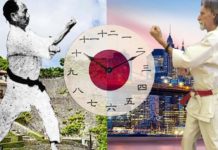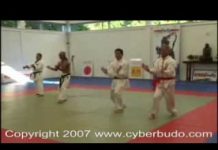By George Dillman ~ Kata can be compared to a song. The meaning of the song is stated in the lyrics and expressed in the melody. The meaning of kata is, in its application for real fighting, the expression of that application in physical movements of the form.
For most ancient masters of karate, kata was the very essence of combat because they knew not only the outward form but also the application. The kata was alive for the masters because they saw in their minds the exact application of the movements as they performed them. Put together, mental image and physical performance insured that the masters were truly able to fight.
This is why the martial artist of old always insisted that kata alone was sufficient, and that free-sparring was unnecessary. Kata alone was sufficient because these martial artists knew what they were doing.
Principles of Kata Interpretation
- No Block Rule: simply put the movement of kata are not defensive. There are no downward blocks, blocking is a completely natural action. The movements called blocks in kata don’t work as blocks – until they are interpreted as offensive actions.
- Pressure Point Rule: Every kata is a pressure point technique. The questions every student should ask is: “What pressure points and I using with this movement?”
- Two Hand Rule: Simply put, there is no wasted part of a kata. Every part of the action is there for a reason. Both hands in the kata action move because both hands are combative in the function.
- Multiple Interpretation Rule: There are several interpretations of a kata move, at least three.
- Direction of Movement: The direction of the movement in the kata indicates the angle the defender assumes in relation to the attacker to issuer successful application of the technique.
- Visualization Rule: when performing kata , always visualize the opponent.
By George Dillman from Advanced Pressure Point Fighting









